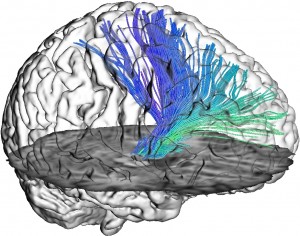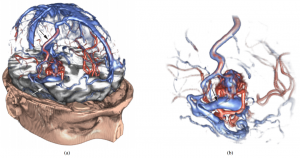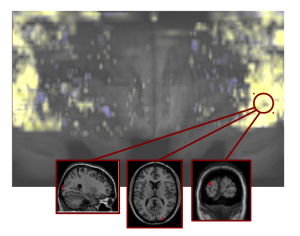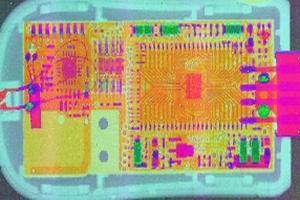I started writing this post in the train from Norrköpping back to Stockholm Arlanda airport after visiting the truly excellent EG VCBM 2012 (Eurographics Workshop on Visual Computing for Biology and Medicine). While enjoying the beautiful view on the stunning Swedish landscape that features many lakes, trees with autumn leaves and a nice autumn sun, I briefly summarized the conference highlights. Please note that these were the conference highlights for me personally, and are not necessarily a reflection of the actual conference highlights. There were so many great talks, I lost count, but in the interest of not making this blog post drag on for too long, I’ll restrict myself to just briefly summarizing a couple of them here.
The first day started with a word of welcome from the chairs Timo Ropinski and Anders Ynnerman and an excellent keynote by Anders Persson (Director of the CMIV): ‘Visualization of Quantified Medical Image Data – Key to the Future?’. While showing us beautiful datasets acquired from Dual Energy CT (DECT), he stressed the importance of making quantified imaging data usable in clinical practice. This can be achieved by working in close collaboration with medical centers to make sure the techniques we are developing are usable by and useful to clinicians or medical researchers.

Dual-energy CT (DECT) with two X-ray sources running simultaneously at different energies allows obtaining additional information about the elementary chemical composition of computer tomography scanned material [1].
The first session of the first day, Tractography and Connectivity, featured a talk by
Anne Berrescalled ‘Tractography in Context: Multimodal Visualization of Probabilistic Tractograms in Anatomical Context’ [2]. Her approach is a way of handling the visibility issues that arise when presenting probabilistic tractograms within anatomical context. Probabilistic tractography data is presented in a ‘glass brain’ rendering that provides anatomical context together with an MRI slice plane, in a collaboration with neurological domain experts.

Tractography data in anatomical context [2].
In the Ultrasound session, the talk by
Daniel Tenbrinck entitled ‘Impact of Physical Noise Modeling on Image Segmentation in Echocardiography’ really stood out for me [3]. Not only was it presented extremely skillfully, but the authors made a convincing argument against the frequently used Gaussian noise model assumption and demonstrated the positive effect of chosing a more suitable model such as the Loupas model. In this same session,
Veronika Solteszova and
Linn Emilie Saevil Helljesenpresented a new way of filtering 3D ultrasound using lowest-variance streamlines that reduces noise in 3D ultrasound datasets with impressive results [4].

Raw 3D ultrasound scan on the left and a visualization of the same dataset filtered with the lowest-variance streamline method [4].
The final session of the day, on Multimodality included a great talk by
Florian Weilerpresenting his work ‘On the Value of Multi-Volume Visualization for Preoperative Planning of Cerebral AVM Surgery’ [5]. In the surgical treatment of cerebral arteriovenous malformations (AVMs), thorough preoperative planning is required using information about the arteries and veins of the lesion from different image sets. The authors merge these image sets and visualize them in an interactive application.

Multi-Volume Visualization for Preoperative
Planning of Cerebral AVM Surgery [5].
Before making our way to the conference dinner, we were given a very special tour of the universe by Anders Ynnerman. I’m typically not at all interested in space stuff, but this was something else! Anders actually showed us the entire universe in
the Dome, using real data from NASA. Besides the visually stunning features of this tour, Anders managed to make it a truly amazing experience by providing commentary full of interesting anecdotes and impressive facts. The feeling that you get when experiencing all this is very hard to describe, so I will not even try. But I will say this though, if you’re ever in the area and get the chance to see this, go for it!
On the second conference day, the Segmentation and Simulation session’s second talk presented by Frank Heckel ‘Sketch-based Image-Independent Editing of 3D Tumor Segmentations Using Variational Interpolation’ was also very interesting [6]. By allowing the user to intuitively draw adjustments on single slices, automatic segmentations can easily be adjusted by medical experts. This is currently shown on CT, but since the adjustments are not image-based, the technique is valid for arbitrary modalities.

Sketch-based segmentation editing: (a) initial segmentation (yellow), manual correction (blue) and (b) 3D result after editing with our variational-interpolation-based approach [6].
After this session, the Visual Computing Systems session started with the impressive ‘Visually Guided Mesh Smoothing for Medical Applications’ talk by
Tobias Moench [7]. The authors provided a way of interactively smoothing a mesh by trying out several parameters and simultaneously show the effect of these settings on mesh quality by using a GPU mesh smoothing implementation. By calculating the model quality for several parameter combinations, an optimal set of smoothing parameters can be automatically suggested as well (
click to see a cool realtime mesh smoothing video).
The medvis.org overlord who also happens to be my supervisor, Charl Botha, presented ‘BrainCove: A Tool for Voxel-Wise fMRI Brain Connectivity Visualization’ in the same session [8]. I am obviously biased here, but I thought it was an interesting and entertaining presentation. I mean it featured the BrainCleaver, what’s not to like?

Braincove’s Lambert’s Cylindrical flatmap representation
of the brain, viewing from the anterior in the middle to posterior at the two sides [8].
The final session of the second day, Biology and Radiology, was concluded with an excellent talk by Katja Mogalle ‘Constrained Labeling of 2D Slice Data in Clinical Application’ [9]. Katja did this as her bachelor project (yes, you read that right!) with Siemens. She has thought of an algorithm that uses constraints to place annotation labels in 2D slice data so that they don’t occlude the image, but are close enough to be linked to the area that they describe.

Placement of seven labels in a viewport showing a liver via the shifting approach [9].
Unfortunately we had to catch a flight, so we had to miss the keynote. The best paper award went to “Atomistic Visualization of Mesoscopic Whole-Cell Simulations” presented by Martin Falk and the best poster was “Efficient projection and deformation of volumetric shape and intensity models for accurate simulation of X-ray images” presented by Moritz Ehlke. My personal favorites of all the talks were the ones by Daniel Tenbrinck, Tobias Moench and Katja Mogalle. To conclude this already far too lengthy post, I’d really like to thank the organizers of this excellent workshop. Interesting talks, a beautiful location, good food, great people and a guided tour of the universe. I’m not sure how any conference will ever top this!
References
- [1] Anders Persson, Christian Jackowskia, Elias Engström and Helene Zachrisson, “Advances of dual source, dual-energy imaging in postmortem CT”, European Journal of Radiology, Volume 68, Issue 3, December 2008, Pages 446–455
- [2]: Anne Berres, Mathias Goldau, Marc Tittgemeyer, Gerik Scheuermann and Hans Hagen, “Tractography in Context: Multimodal Visualization of Probabilistic Tractograms in Anatomical Context”
- [3]: D. Tenbrinck, A. Sawatzky, X. Jiang, M. Burger, W. Haffner, P. Willems, M. Paul and J. Stypmann “Impact of Physical Noise Modeling on Image Segmentation in Echocardiography”
- [4]: Veronika Šoltészová, Linn Emilie Sævil Helljesen, Wolfgang Wein, Odd Helge Gilja and Ivan Viola, “Lowest-Variance Streamlines for Filtering of 3D Ultrasound”
- [5]: F. Weiler, C. Rieder, C. A. David, C. Wald, and H. K. Hahn “On the Value of Multi-Volume Visualization for Preoperative Planning of Cerebral AVM Surgery”
- [6]: F. Heckel, S. Braunewell, G. Soza, C. Tietjen and H. K. Hahn, “Sketch-based Image-independent Editing of 3D Tumor Segmentations using Variational Interpolation”
- [7]: Tobias Moench, Christoph Kubisch, Kai Lawonn, Ruediger Westermann and Bernhard Preim,”Visually Guided Mesh Smoothing for Medical Applications”
- [8]: A.F. van Dixhoorn, J. Milles, B. van Lew and C.P. Botha “BrainCove: A Tool for Voxel-wise fMRI Brain Connectivity Visualization”
- [9]: Katja Mogalle, Christian Tietjen, Grzegorz Soza and Bernhard Preim, “Constrained Labeling of 2D Slice Data for Reading Images in Radiology”















